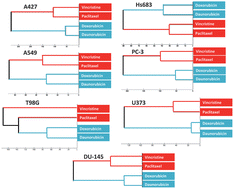The effect of anticancer drugs on seven cell lines monitored by FTIR spectroscopy
Abstract
Systemic approaches such as metabolomics are increasingly needed to improve the development of novel

* Corresponding authors
a
Center for Structural Biology and Bioinformatics, Laboratory for the Structure and Function of Biological Membranes, Campus Plaine CP206/02, Université Libre de Bruxelles, Bld du Triomphe 2, CP206/2, B1050 Brussels, Belgium
E-mail:
egoor@ulb.ac.be
Fax: +32-2-650-53-82
Tel: +32-2-650-53-86
Systemic approaches such as metabolomics are increasingly needed to improve the development of novel

 Please wait while we load your content...
Something went wrong. Try again?
Please wait while we load your content...
Something went wrong. Try again?
A. Derenne, M. Verdonck and E. Goormaghtigh, Analyst, 2012, 137, 3255 DOI: 10.1039/C2AN35116A
To request permission to reproduce material from this article, please go to the Copyright Clearance Center request page.
If you are an author contributing to an RSC publication, you do not need to request permission provided correct acknowledgement is given.
If you are the author of this article, you do not need to request permission to reproduce figures and diagrams provided correct acknowledgement is given. If you want to reproduce the whole article in a third-party publication (excluding your thesis/dissertation for which permission is not required) please go to the Copyright Clearance Center request page.
Read more about how to correctly acknowledge RSC content.
 Fetching data from CrossRef.
Fetching data from CrossRef.
This may take some time to load.
Loading related content
